Rising British music star Sam Fender gets real with Kodak 16mm
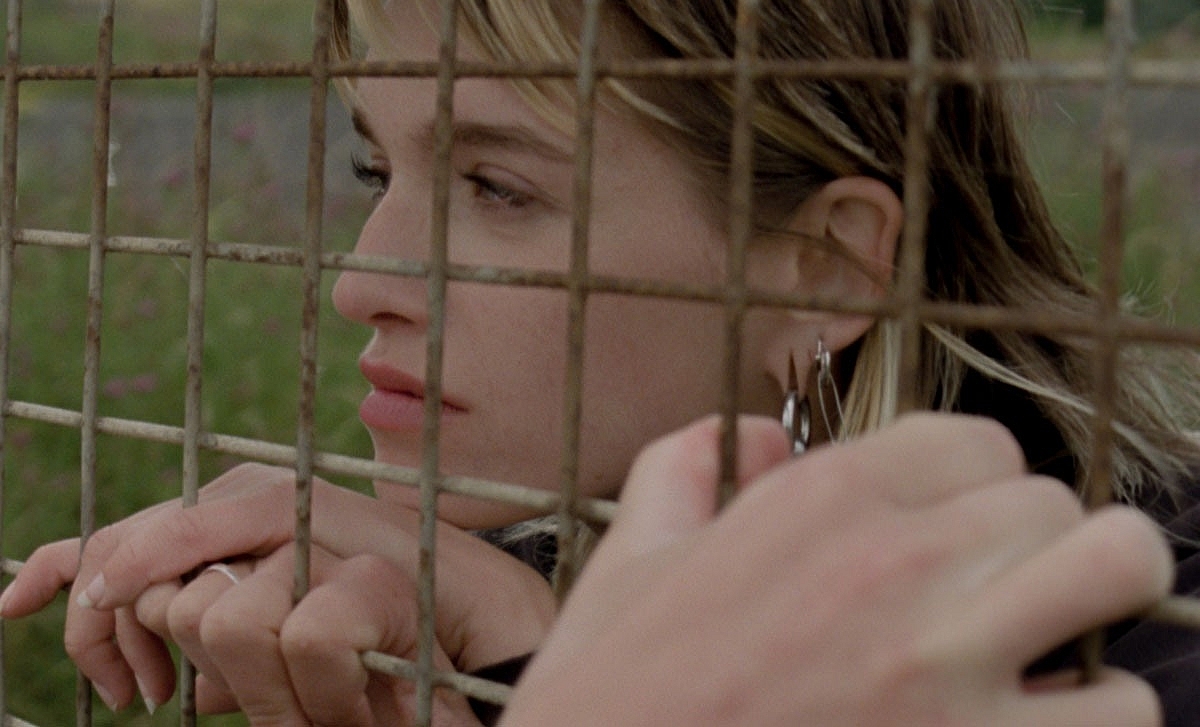
A shot from Sam Fender’s 16mm-originated "Greasy Spoon" music video, directed by Jack Whitefield.
Listed by BBC Music as one of the picks for Sound of 2018, rising star Sam Fender is far from the usual current crop of singer/songwriters out there. Hailed as “a rare, raw talent,” his material is distinctive in that not one track has thus far been a love song. Instead, the 21-year-old, who hails from the city of Newcastle, in the northeast of England, is more concerned about a diverse range of contemporary topics – the government, surveillance society, fake news, poverty and sexual harassment. Fender’s exuberant, adrenalized anthems are imbued with an intimate, forthright poignancy and lyrical grit.
According to Fender’s manager Owain Davies, who took the artist under his wing as a teenager after being blown away by a local pub performance, “Sam’s songs are real, full of the energy and vitality of youth. And the best way for that to chime in his music videos is by shooting them on film. There’s simply no better aesthetic.”
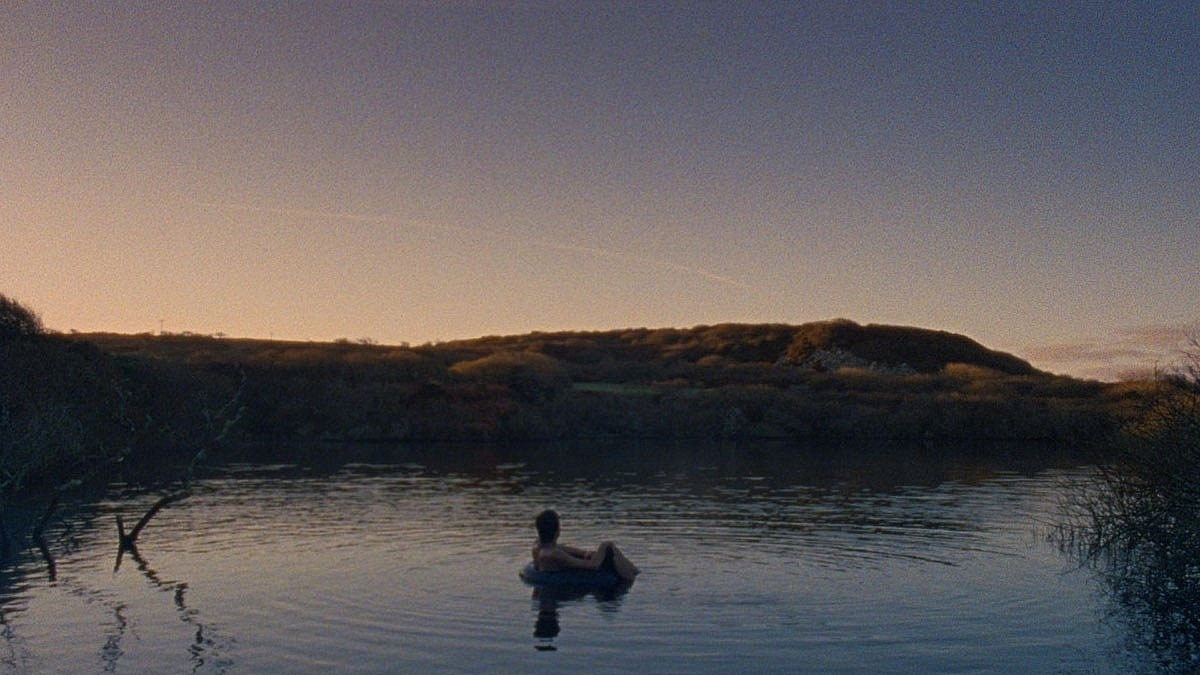
A shot from Sam Fender’s 16mm-originated "Start Again" music video, directed by Jack Whitefield.
Following his breakthrough track “Play God,” all of Fender’s subsequent promos (aka music videos) to date – “Greasy Spoon,” “Millennial,” “Start Again,” and the most recently released “Leave Fast,” which is featured on MTV’s playlist – were filmed on Kodak Super 16mm, under the direction of visual artist Jackson Whitefield, aged 26, whose entire oeuvre is based on film capture.
“I have been making artworks, photographic books, promos and short abstract films since I was a teenager – either on Kodak Tri-X photographic and Super 8mm film stocks,” says Whitefield, who spoke to Kodak InCamera from his B&W and color print processing studio in the coastal resort of St Ives, Cornwall, UK.
“Film is so tangible, and the results feel so much more like real life stories than you can achieve with digital. Sam’s songs are expressions about the freedom, the certainties and uncertainties of adolescence, and film provides the perfect connection to these feelings.”
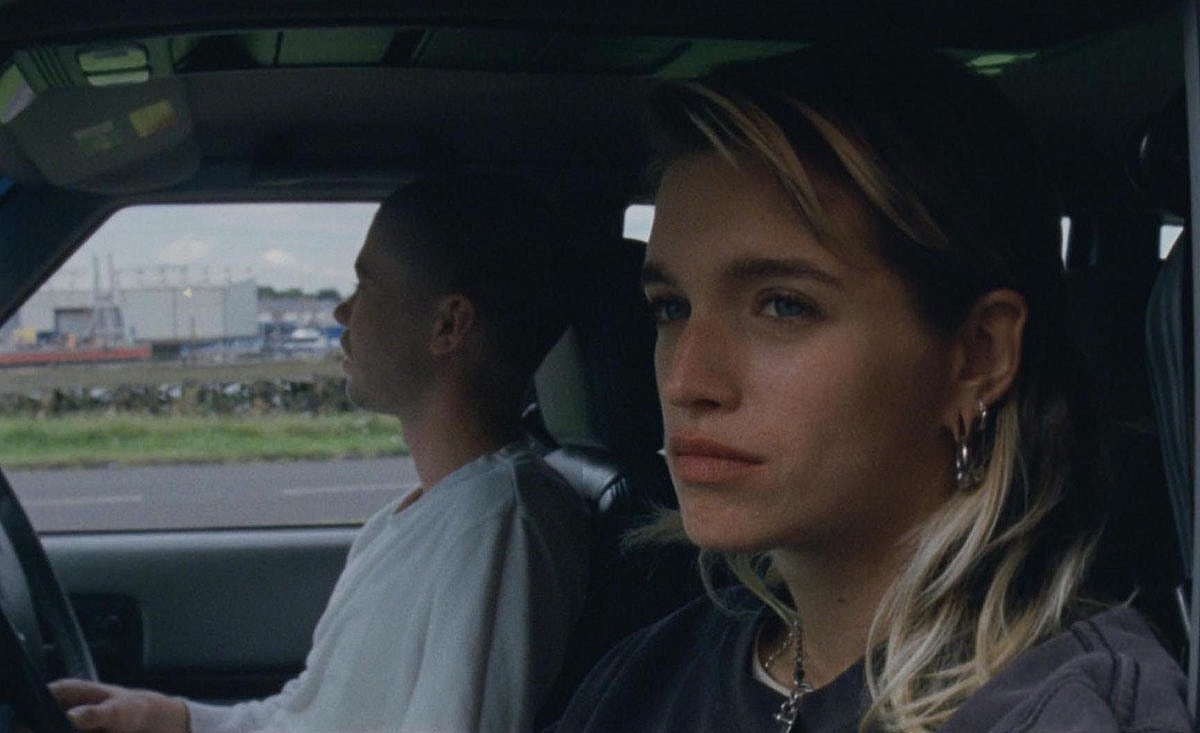
A production still from Sam Fender’s 16mm-originated "Greasy Spoon" music video, directed by Jack Whitefield. Photo taken by Becky Tyrrell, using Kodak 35mm. Instagram: @leftoverlight.
Whitefield says his personal directorial influences come from having travelled extensively around the world, together with a long-held passion for the New Topographics of the 1970s – an era when young photographers, such as Robert Adams and Lewis Baltz, trained their lenses on the creeping urbanization and industrialization of American landscapes.
“Instead of portraying an ideal image of nature and the environment, they found a new beauty and realism between the cracks, in the banality and stripped-down plainness of how mankind had altered the landscape,” remarks Whitefield. “I became fascinated, to the point of near obsession, by the spirit and style of those images. These works stoked my passion for the filmed aesthetic and have definitely informed my work in cultivating the looks for the promos that accompany Sam’s songwriting.”
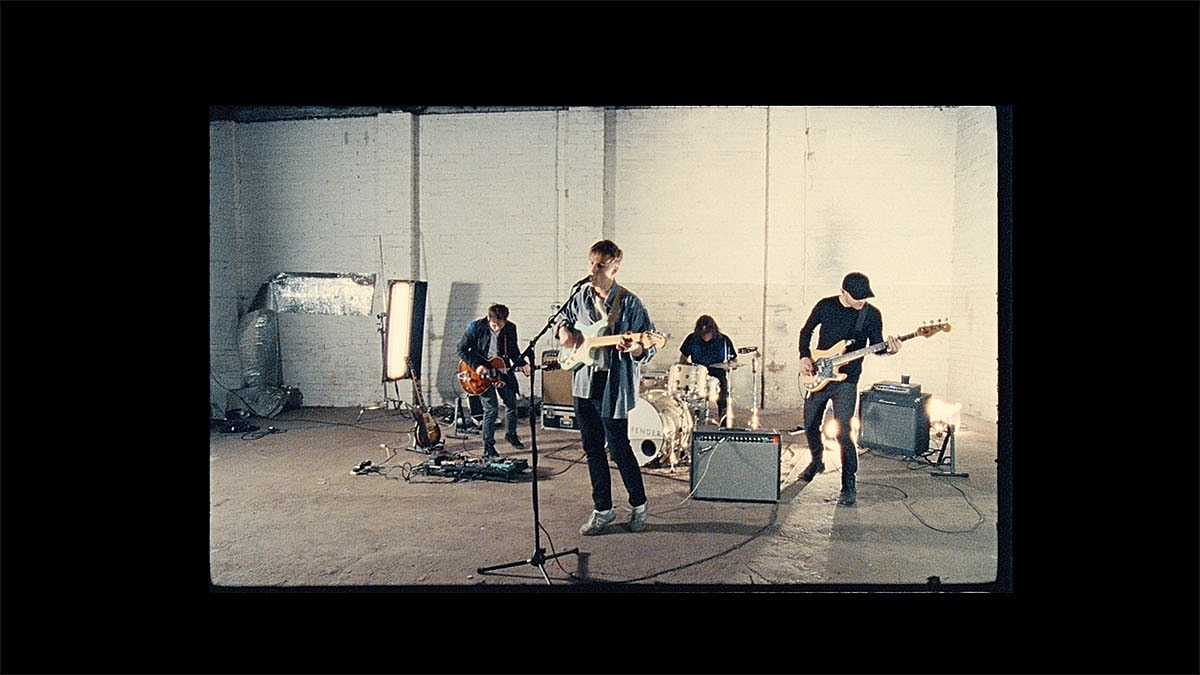
A shot from Sam Fender’s 16mm-originated "Millennial" music video, directed by Jack Whitefield.
He adds, candidly: “Outside of my own work, the music videos for Sam were my first commercial projects. Although I had used Kodak Super 8mm film before, they also represented my first use of professional 16mm cameras, film and motion picture stock. It was a great learning experience.”
Set on a sweltering day in the urban wastes of Newcastle and the surrounding coastline, the promo for “Greasy Spoon” portrays the platonic connections between a teenage girl and a boy, while the performance-driven video for “Millennial,” featuring Fender and his band, employs a disused warehouse to deliver a socially-aware satire of young people as gullible media worshippers. The visuals for “Start Again,” were inspired by the increasing number of people who prefer to live radical-but-simple, off-grid lives in the woods and the countryside, confounding what society expects of them. By contrast, the recently released “Leave Fast,” shot in Fender’s hometown, is a testament to the entrapment of small town ennui. Through its depiction of working class suburbs and desolate backstreets, it delivers a haunting, piercing look at what it is like to grow up in an austere, contemporary Britain.

BTS shots from Sam Fender’s 16mm-originated "Greasy Spoon" music video, directed by Jack Whitefield, with DP Jack Johns at the camera. Photo by Becky Tyrrell, using Kodak 35mm. Instagram: @leftoverlight.
In their production, Fender’s music videos, shot by cinematographer Jack Johns, utilized ARRI 416 or Aaton XTR Prod 16mm cameras, fitted with Zeiss zoom lenses. The footage for each was variously captured using combinations of the complete range of KODAK VISION3 Color Negative 16mm film stocks – 50D (7203) and 250D (7207), along with 200T (7213) plus 500T (7219). Film processing was completed at Cinelab in London.
“The vast majority of the set-ups for Sam’s music videos were captured in natural, available light, normally during the early morning or at dusk,” says Whitefield. “Depending on the weather and time of day, we typically used the 50D for brighter sunlit exterior scenes, or reached for the 250D when the conditions were darker or overcast. For the interiors, and particularly in “Millennial” where we introduced a small degree of lighting on the interiors, we used the 200T and 500T stocks.
Operating the camera handheld, combined with the unique texture, grain and color of the different Kodak film stocks, means that the results are physical and real.
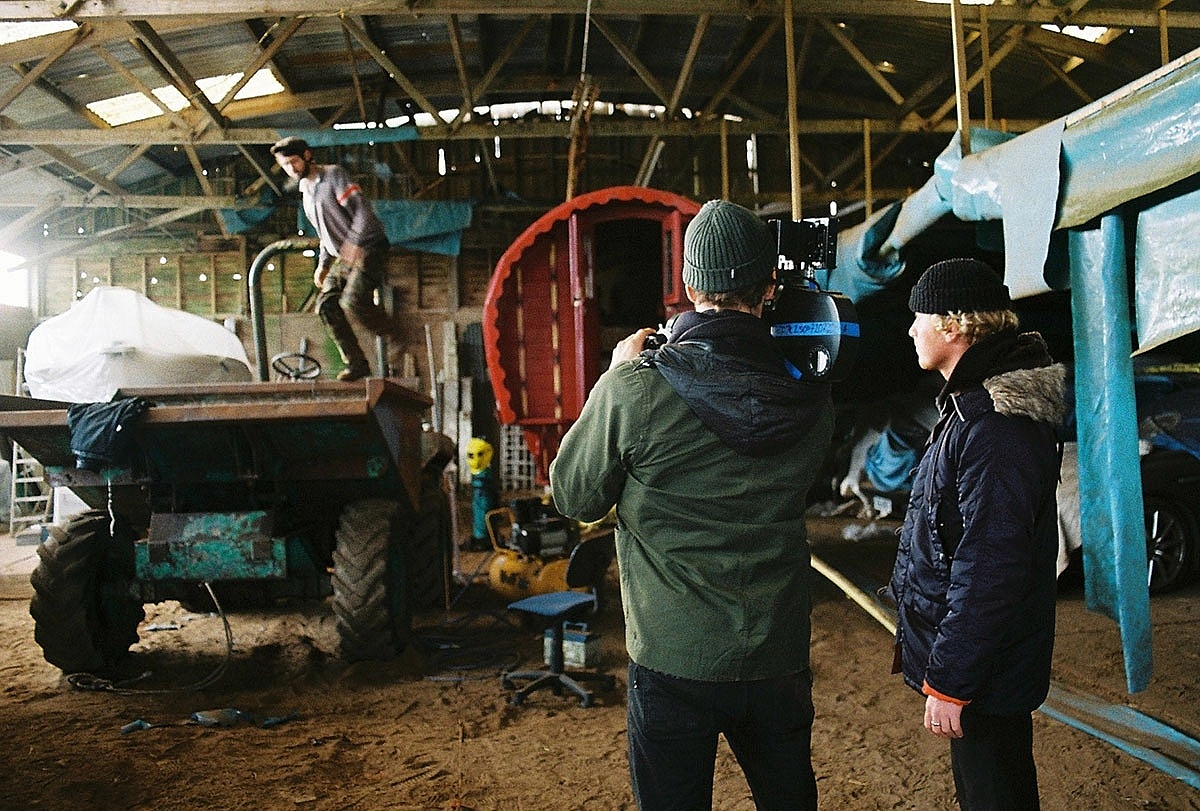
BTS shot from Sam Fender’s 16mm-originated "Start Again’ music video, directed by Jack Whitefield (blond hair), with DP Jack Johns at the camera. Photo by Becky Tyrrell, using Kodak 35mm. Instagram: @leftoverlight.
“I don’t look for polished, clean images, and prefer them to feel rough around the edges. So I actively wanted to include little mistakes in these promos that might have happened during the shoot – little light leaks, scratches, blobs, blemishes, hairs-in-the-gate. These all add to the reality of the image, to the story being told, and the more I could get some of that, without it being forced, the better.”
Whitefield adds: “I have never felt that digital images give you the same emotional connection to the story, and I suspect the process that comes with shooting digitally actually gets in the way. With film, the process is more focused, concentrated and creatively immersive. Either I work the camera or entrust it to a friendly eye and know exactly how the light will go through the lens and hit the film. But with digital, I just can’t visualize what’s being recorded by the camera, nor how the final picture will turn out.”
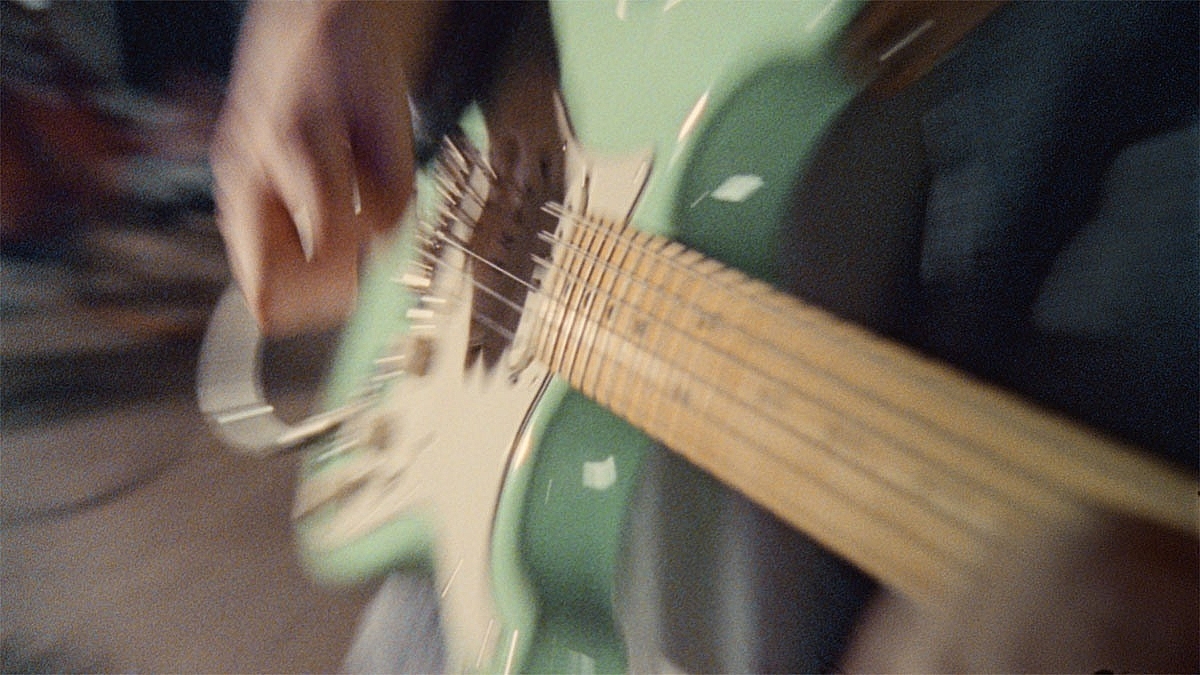
A shot from Sam Fender’s 16mm-originated "Millennial" music video, directed by Jack Whitefield.
While Whitefield normally edits and color grades his personal work, the music videos for Sam Fender were completed at Moving Picture Company in Soho, in collaboration with colorist Matthieu Toullet.
“It was a wonderful experience,” Whitefield admits. “Although I had lots of tools at my disposal, I never like to grade the image too much away from the negative that comes back from the lab. Matthieu understood what I wanted to achieve and was very helpful in retaining the palpable quality in the look. It wasn’t about the pictures being pretty, it is more about what they say, and film helped to give them the punch of truth.”
As of the summer of 2018, Sam Fender and his band will be appearing at numerous music festivals around the UK and in Europe – Germany, Spain and the Netherlands. Catch them if you can.
Watch the videos: